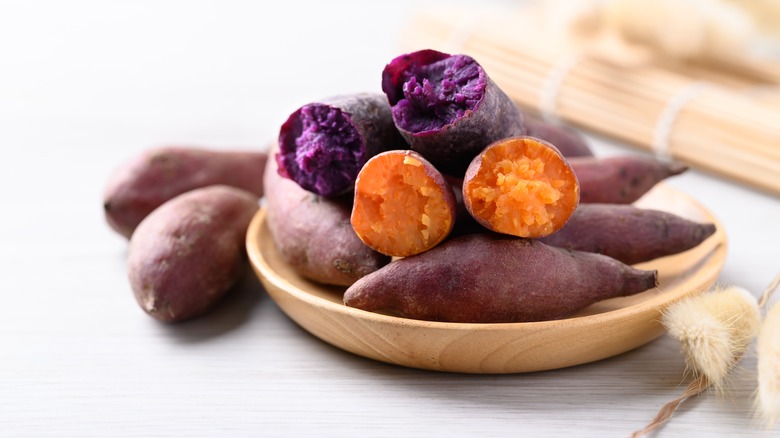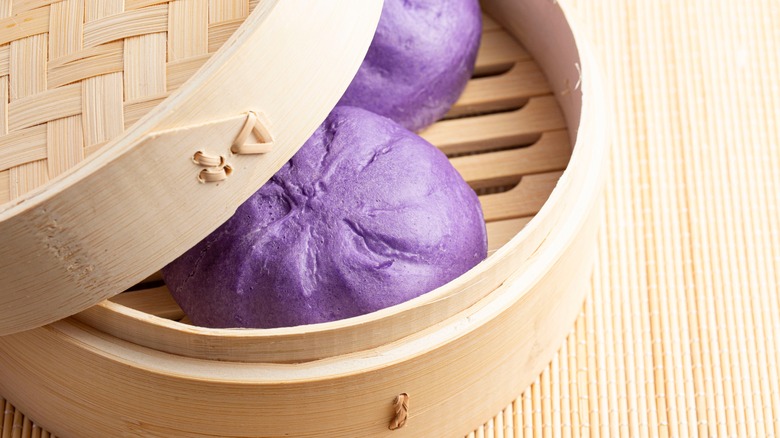Purple Vs Orange Sweet Potatoes: The Difference, Explained
The sweet potato is literally named for its primary characteristic: a substantially higher level of natural sugar compared to "regular" potatoes. As a root vegetable from the morning glory family, sweet potatoes come in several varieties with their own defining characteristics. Two, in particular, stand out, most noticeably for their brilliantly hued inner flesh but also for harboring some of the most highly valuable nutrients for human consumption.
Those two unassuming root veggies are orange sweet potatoes and purple sweet potatoes, each of which bear extraordinarily beneficial amounts of plant-based phytochemicals that act as antioxidants. But these two different sweet potatoes happen to bring their own specific types of phytochemicals to the table. Orange sweet potatoes are naturally loaded with higher amounts of beta-carotene, while purple sweet potatoes carry more rich anthocyanins. These two phytos are responsible for the separate orange and purple colors, similar to other vividly hued vegetables such as carrots, blueberries, and red onions.
They're also what make both types of sweet potatoes so nutritious, with the antioxidant properties potentially contributing to heart and gut health, anti-aging, healthy vision, enhanced brain function, and more. Purple sweet potatoes in particular are linked to cancer prevention or slower growth of cancer cells. Though sharing superstar antioxidant properties, the two do slightly diverge when it comes to flavor and texture.
Orange and purple sweet potatoes have more in common than you might think
Orange sweet potatoes — by far, the most common variety found in mainstream supermarkets — bring that slightly sweet taste we know from holiday dinners and pies. They tend to be a bit sweeter than purple sweet potatoes, which by contrast have a milder, more balanced sweetness. Purples can also carry floral or wine-like flavor notes. Some textural differences between the two exist as well: both are starchy by nature, but purple sweet potatoes are dryer and more dense, typically requiring longer cook times.
Purple sweet potatoes are also very distinct in their heritage and growing regions. A handful of purple varieties thrive in the United States; some more readily available than others. Stokes purple sweet potatoes hail mostly from North Carolina, while two other well-known varieties have strong ties to Hawaii. Okinawan sweet potatoes, originally from Japan, are available year-round, while Molokai sweet potatoes are grown exclusively on the island of Molokai, rarely making their way to mainland markets. Differences between Okinawan and Molakai purple sweet potatoes do exist, but they're minimal.
Likewise, orange and purple sweet potatoes in general are close enough in taste and texture to be interchangeable in most sweet potato recipes. When baking, just be sure to cook the purples a bit longer to break down the starchy density. Try making sweet potato fries, casseroles, chowders, dumplings, or gnocchi, and mash them up with a splash of bourbon.

